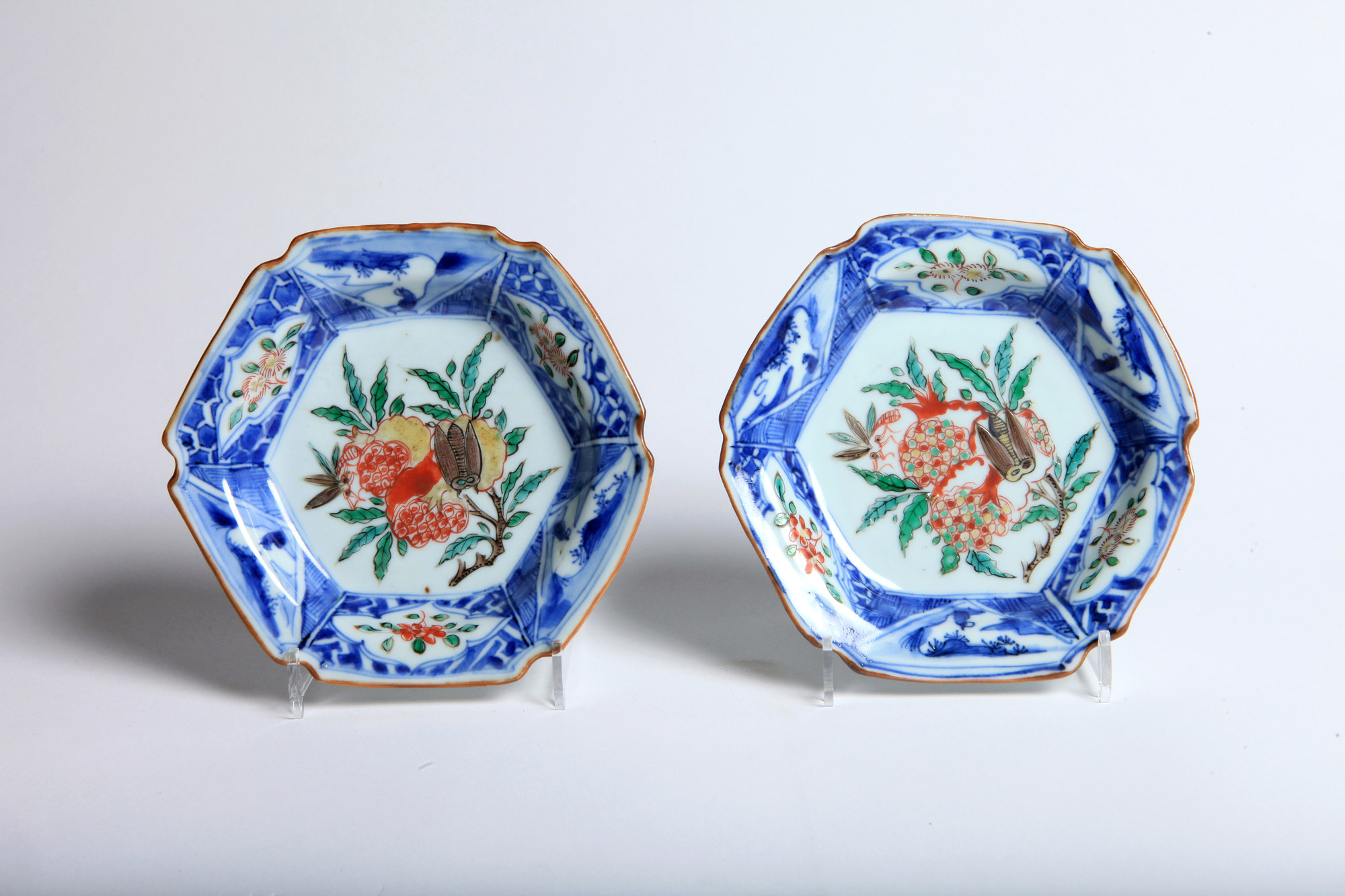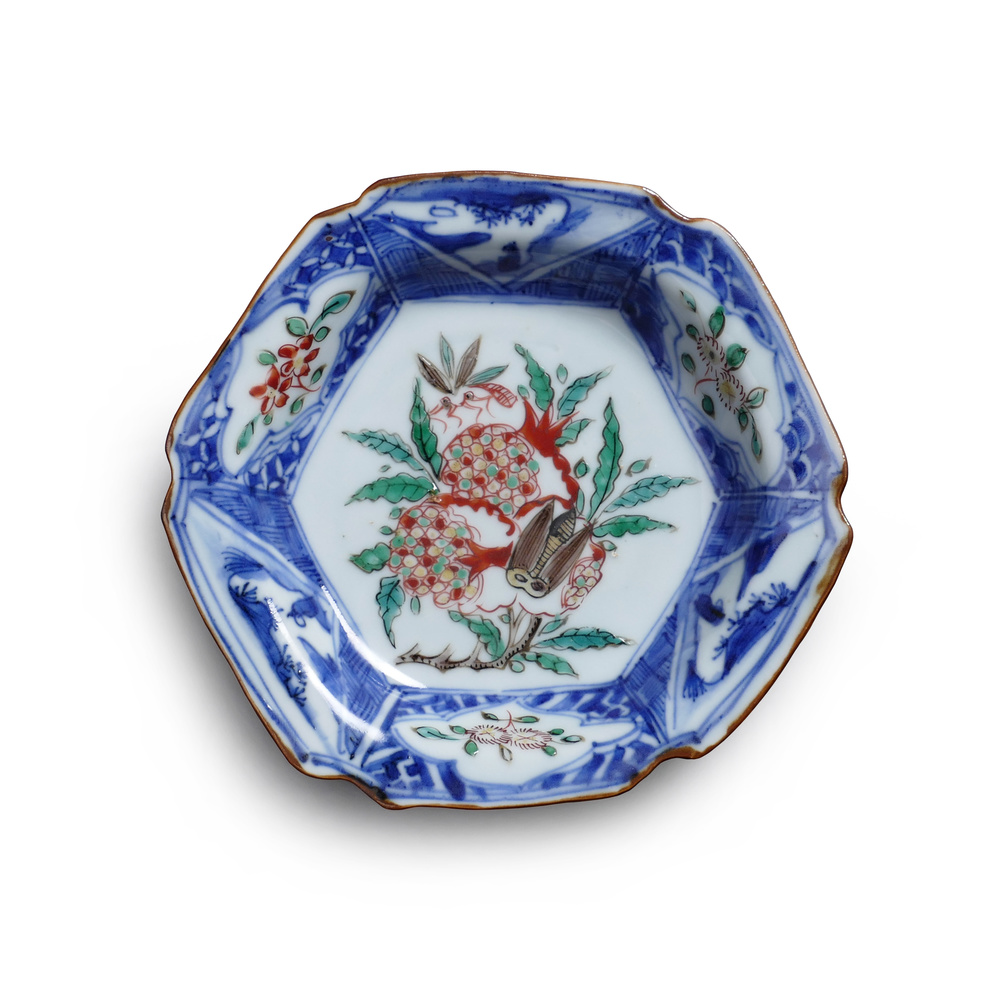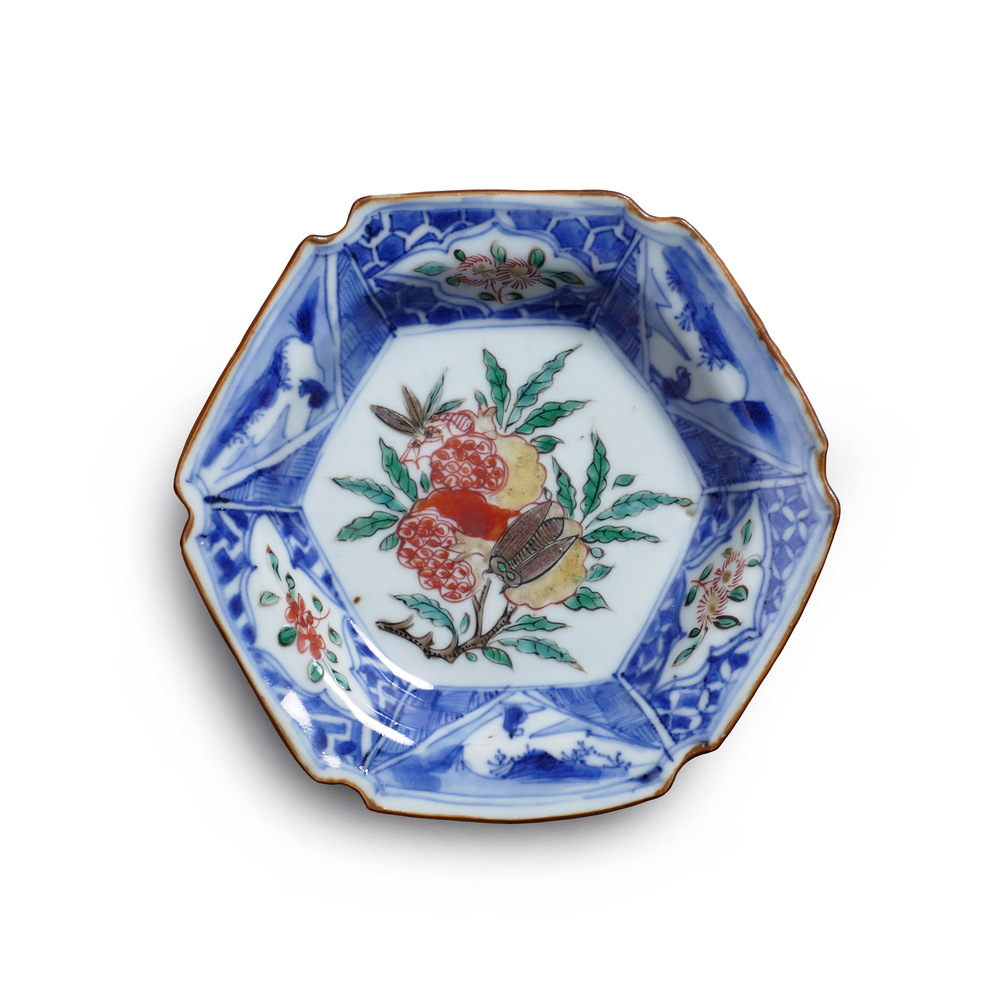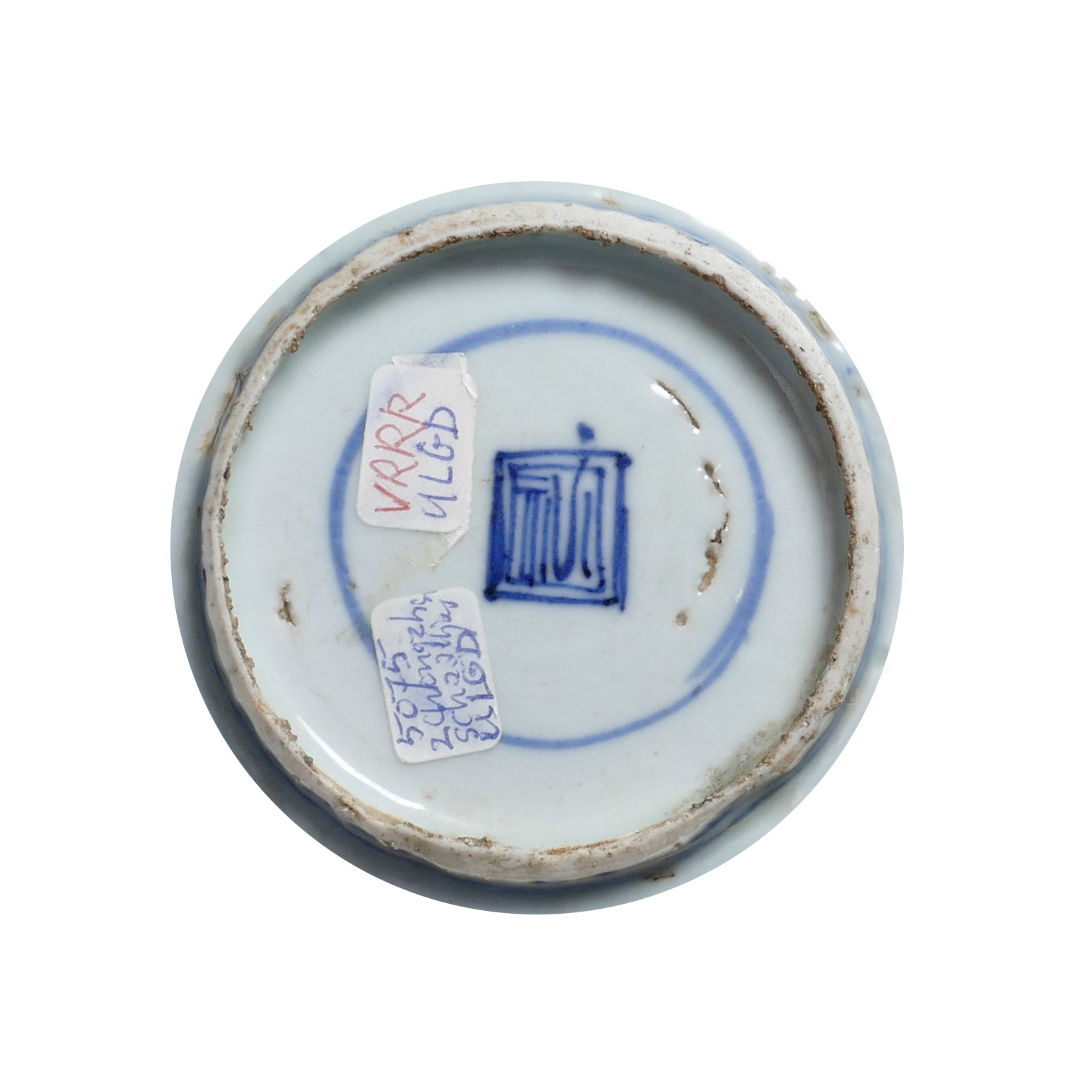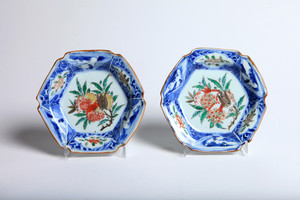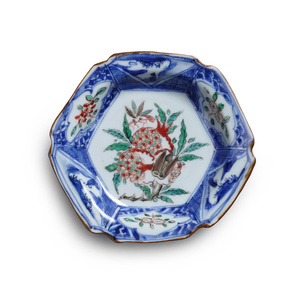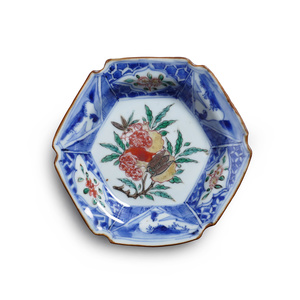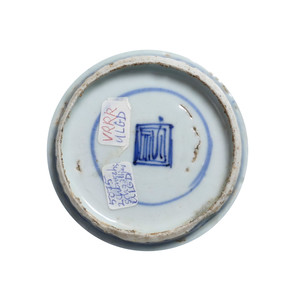Chongzhen, c. 1628-1644
The dishes are of hexagonal form with indented corners. The central panels are painted in green, yellow and aubergine enamels and iron-red with a fruiting branch bearing three pomegranates with exposed seeds, a cicada and a large mosquito depicted on the fruits. Each dish is decorated around the cavetto and everted rim in underglaze blue with three fan-shaped cartouches containing a scholar in a landscape, alternating with quatrefoil panels enclosing flower sprays in overglaze enamels, all reserved against different diaper grounds. The rims are dressed brown. The undersides are painted in underglaze blue with four stylised flowerheads and the recessed bases with a circle enclosing a single character fu within a double square. 14 cm wide
Provenance: Formerly in the Morpurgo Collection
A very similar dish was included in the Hong Kong O.C.S. Exhibition 'Transitional Wares and their Forerunners', 1981, Cat. no. 153
These small dishes or mukozuke were used to serve a kaisekimeal during a Japanese tea ceremony. They differ slightly from each other in how the enamels in the centre are organized. This is a typical characteristic of this type of ware, as the potters and decorators could express a lot of artistic freedom during this period. In ancient times, jade cicadas were placed in the mouths of the dead, as they were the symbol of cyclical resurrection and immortality. Later they also became associated with honesty and integrity. The pomegranate, originally from Central Asia, has been cultivated in China since the third century B.C. When its seeds are exposed, as on the present pair of dishes, the fruit represents ‘Pomegranate revealing one hundred sons’, liukai baizi, or, ‘One thousand sons within the same womb’, qianzi tongmo.
PFE 05 明 青花五彩石榴紋盤一對
時代:明 崇禎,約1628至1644年。
特徵:盤呈具倭角之六邊形,盤緣有釉下藍彩裝飾,盤心以綠色、黃色與紫紅色琺瑯彩描繪三顆石榴。
尺寸:寬14公分。
來源:原為Morpurgo收藏。
